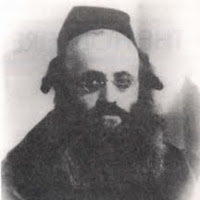There are times when we put ourselves out there and the result is rejection. I am not a big fan of being rejected or, while I’m at it, constructive feedback (which is now what people previously referred to as criticism). I understand the whole, “message is really from Hashem” thing that we commonly associate with negative things that happen or are said to us. Seeing how I gravitate towards mussar and self growth, you’d think that I’d be all about constructive feedback and, even, rejection. I’m not. I’m sensitive and don’t like like it. I listen, process, accept and attempt to change course, but my natural reaction is usually one of resistance. As an armchair analysis, this is probably, davka, why I like mussar, since growth sometimes comes after uncomfortable criticism.
My wife, in her infinite wisdom, thinks this is due to not being involved in organized sports when I was growing up (sadly rag-tag soccer games and skateboarding doesn’t really as “organized sports”). Had I played baseball when I was growing up I would have dealt with the reality of striking out, missing catches, and losing games. I grew up playing video games on Atari and a Franklin Ace 1000 (a clone of the Apple II+). If you lost a game then you simply restarted or moved on to something else. There isn’t any personal connection or a blow to the ego if you lose at a video game. Your future success isn’t impeded by being defeated in Defender, Dig Dug, or any of the Zork adventure games.
A number of weeks ago I wrote something that I thought was worth sharing beyond this blog. I contacted a national Jewish newspaper, a Jewish website, and an online Jewish journal. Respectively, the feedback was:
- A very well written piece, but it might be misinterpreted by more right wing elements
- While we liked the essay, the writing on our website is focused on the not-yet-observant Jew
- No reply
I got the message. What I wrote either wasn’t meant for those platforms, or, simply, should just remain on this blog. I am not sure what will become of this essay, but the whole rejection process reminded me of the snippets that I
posted once from two rejection letters that Georger Lucas received after pitching Star Wars to different movie studios. Sadly there is neither a a chapter on rejection in
Orchos Tzaddikim nor a series of mp3 from
Rav Weinberger that I can draw strength from.
Rejection, failure, or reassessing a situation is part of life. In a panel discussion with
Dr. David Pelcovitz and Mr. Moishe Bane there is a great lesson given. Reb Moishe Bane mentions that one of the key life lessons he feels it’s important for people to learn is the “glory of failure” as he calls it. He mentions that there have been countless times that a CEO or yeshiva administrator has had to deal with the reality of not being able to make payroll and has had to chose to find funds via unethical means or simply swallow their pride and admit failure. The latter choice is where the “glory of failure” come in. We learn from our mistakes and grow from the experience.
Thinking about this, I came up with a few examples that might be of comfort for anyone who feels beaten down, rejected, or is simply pushed up against the the wall. Over course, were I to go through the many inspirational stories penned by R Paysach Krohn, R Yechiel Spero, or the “Small Miracles” books, we would be here forever. I won’t even mention any of the amazing stories from
Hassidic Tales of the Holocaust. Parshas Va’eschanan– Moshe’s plea to enter Eretz Yisrael and Hashem telling him that it wouldn’t happen.
Interestingly, in Likutei Moharan II, lesson 78, Reb Nachman taught: “Gevalt! Never give up. There is never a reason to give up.” This was said toward the end of Reb Nachman’s life on a Shabbos and is connected to the parsha listed above, actually. See Reb Nachman’s Wisdom #153 (
pages 302-306 of this pdf).*
Reb Jonathan Rosenblum
writes about the struggle of starting the Gatehead Kollel:
THE LATE SUMMER OF 1941 found Rabbi Dessler in Chesham in Buckinghamshire along with other Jewish refugees from the constant German bombing of London. He was once again separated from his entire family. His son Nachum Velvel was learning in Telshe Yeshiva in the United States; his wife Bluma and daughter Hennie were trapped in Kelm at the outbreak of the War and were fortunate to be able to wend their way to Australia for the duration.
Rabbi Dessler was then in his fifty-first year, and had but 12 years left to live. Though many of his classic essays had already been formulated, not one word had been published except in stencils for his talmidim. Had Rabbi Dessler passed away then his name and thought would have been lost to posterity.
That summer a letter arrived at his lodgings from Rabbi Dovid Dryan, the mohel of Gateshead and founder of the fledgling Gateshead Yeshiva. Reb Dovid proposed the establishment of a kollel of outstanding young kollel scholars in Gateshead. Unbeknownst to Rabbi Dessler, Reb Dovid had sent the same letter to 21 other rabbis. Also unbeknownst to him, every other rabbi responded negatively to Reb Dovid’s suggestion: 18 did not bother to answer at all; another 3 commended the idea but decided it was impracticable under the wartime circumstances. The naysayers might have added that the number of those who appreciated the importance of Torah learning, much less the concept of Torah lishma, in England in those days in were few indeed. The few yeshivos that existed were small in size, and the idea of Kollel learning was unknown.
Rabbi Dessler alone replied positively to Reb Dovid’s letter: “My heart sees a great light in the matter which Your Honor suggested – your merit is very great.” He replied as he did not because he saw success as guaranteed, but because he viewed the matter as too important not to try.With Rabbi Dessler’s encouraging response to Reb Dovid Dryan’s letter, the face of English and all European Jewry was changed forever. By early 1942, the first group of young scholars was already in place.
If R Dovid Dryan had not written 22 letters initially we would ever have had what became Gatehead.
Learning in yeshiva I often heard a story about the Rav zt’l that I sort of thought was an urban legend. However, it was told over by Dr. Norman Lamm at a hesped he gave for the Rav.
It was my second year in his sheur, and I was intimidated and in awe of him as was every other talmid-that is, almost everyone else. There was one student, the youngest and one of the brightest, who was clearly the least frightened or awed. The Rav had been developing one line of thought for two or three weeks, when this talmid casually said, “But Rebbe, the Hiddushei Ha-Ran says such-and-such which contradicts your whole argument.” The Rav was stunned, held his head in his hands for three agonizingly long minutes while all of us were silent, then pulled out a sheaf of papers from his breast pocket, crossed out page after page, said that we should forget everything he had said, and announced that the sheur was over and he would see us the next day.
I Iearned two things from this remarkable episode. First, we were overwhelmed by his astounding intellectual honesty. With his mind, he could easily have wormed his way out of the dilemma, manipulated a text here and an argument there, maybe insulted an obstreperous student, and rescued his theory and his ego. But the Rav did nothingof the sort! He taught, by example, the overarching goal of all Torah study as the search for Truth. That search for Truth was of the essence of his activity in Torah, and we witnessed it in action. He encouraged independent thinking by his pupils as a way to ensure his own search for the truth of Torah. The Rav was authoritative, but not authoritarian. No “musar shmuess” no lecture in ethics-could have so successfully inculcated in us respect for the truth at all costs.
The second lesson came with the anti-climax to the story. The very next day, it was a Wednesday, the Rav walked into class with a broad, happy grin on his face, held out his copy of the Hiddushei Ha-Ran, and said to the talmid, “Here-now read it correctly? The Rav had been right all along….
That willingness to change course is also a source of inspiration. The Alter of Slabodka totally switched his own derech ha mussar and the result was a focus on the greatness of man and not on the weakness of humanity, as posted
here.
I have heard and read stories of both Chassidim, especially Lubavitchers, and Novardok yeshiva students and the terrible conditions in Sibera that they went through. Many fought long and hard and survived, while others didn’t. The end result is that we have to keep plugging. For me, this means that while my first official attempt at getting an essay published didn’t quite work out how I wanted it to, I haven’t given up.
* Thanks to A Simple Jew for pointing me to the lesson of Prostuk










